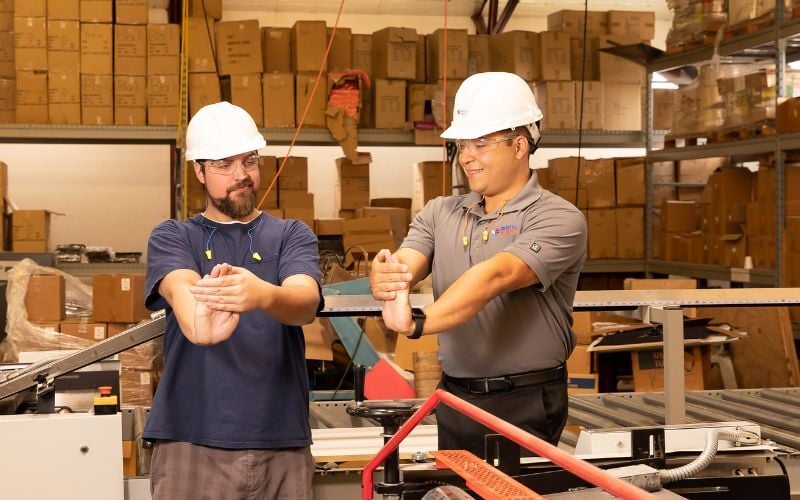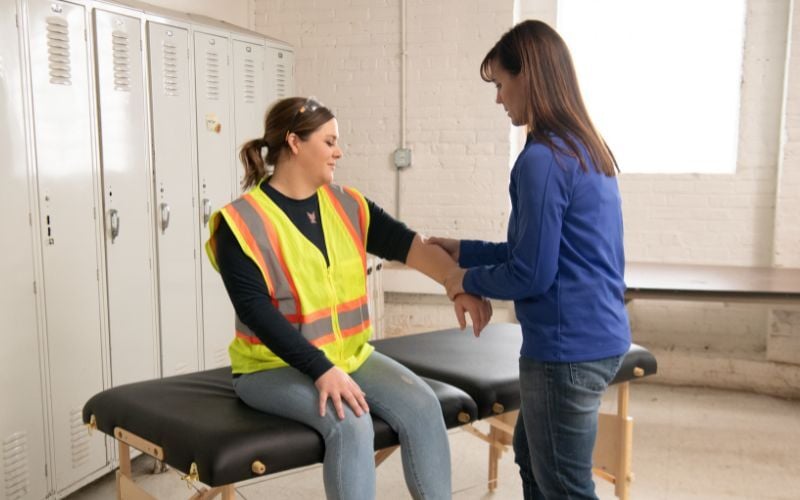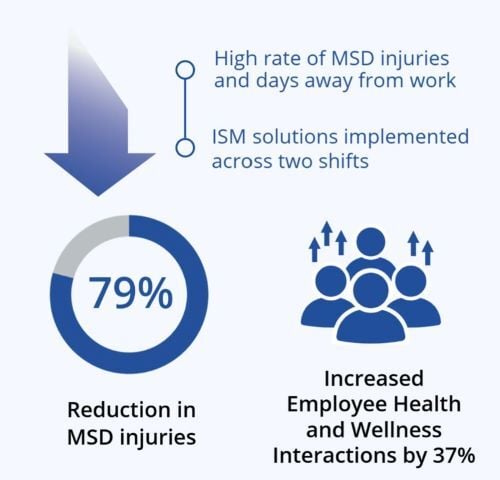Every organization wants higher productivity, lower costs, and a healthier workforce. But what if the best productivity hack wasn’t about software, automation, or stricter deadlines? What if the real key to efficiency was simple: prioritizing care for employees?
Musculoskeletal (MSK) injuries are one of the leading causes of lost workdays and workers’ compensation claims across industries. Beyond the financial costs, these injuries erode morale, increase turnover, and drain productivity. By shifting from reactive safety programs to proactive care initiatives, organizations can turn injury prevention into a driver of engagement, performance, and long-term growth.
This blog explores practical and intelligent strategies for building a workplace where care directly fuels productivity.

Moving Beyond Compliance: Why Care Matters
Traditionally, safety programs were rolled out after an incident as a reactive step to meet compliance requirements. While necessary, that mindset often overlooks the bigger picture: a culture of safety is not just about preventing accidents, but about enabling people to perform at their best.
When care becomes a priority, employees feel valued. They’re more engaged, more loyal, and more motivated to contribute. A workplace that invests in prevention sends a clear message that “your health matters.” That message, in turn, translates into higher morale, lower turnover, and stronger overall productivity (see a case study example).
The future of workplace safety is cultivating a culture where care and prevention are viewed as investments in quality.
Prevention as the Ultimate Productivity Hack
The question many leaders ask is: how does prevention improve productivity? The better question might be: what if prevention is the best productivity hack?
Investing in prevention reduces incidents and lost workdays, but it also enhances morale and encourages efficient practices. Prevention creates an environment where quality and productivity thrive.
Key Areas Where Care Improves Productivity
To understand how prevention works in practice, let’s break down six critical areas where prioritizing care can transform both health and performance.
1. Ergonomics
Ergonomics is one of the most effective ways to reduce injuries and boost productivity.
- Less fatigue, more focus: Ergonomic setups reduce discomfort, allowing employees to stay engaged and efficient.
- Fewer injuries: Proper workstation design lowers the risk of repetitive strain and musculoskeletal disorders.
- Higher morale and retention: Comfortable employees feel valued, which improves satisfaction and reduces turnover.
- Better quality output: When employees aren’t distracted by pain, they produce higher-quality work.
- Cost savings and inclusivity: Ergonomic investments pay off through reduced claims and greater accessibility for diverse needs.
2. Early Intervention
Over 60% of workplace injuries are musculoskeletal. Early intervention is key to addressing issues before they escalate.
- Prevents escalation: Identifying discomfort early prevents chronic injuries.
- Builds proactive culture: Employees learn that care is a priority from day one.
- Lowers costs: Minor issues are resolved before they turn into expensive claims.
- Improves onboarding: New hires start with proper ergonomic training and healthier habits.
- Supports continuous improvement: Feedback loops allow workplaces to refine practices quickly.
3. Health and Wellness
Care isn’t just about posture—it’s about holistic wellbeing.
- Supports resilience: Employees who are mentally and physically well recover faster and handle demands better.
- Prevents burnout: Stress management and lifestyle practices reduce mistakes and chronic conditions.
- Boosts engagement: Wellness programs show employees they’re valued for more than just output, building loyalty and morale.
- Integrates with ergonomics: Stretching, nutrition, and mental health practices reinforce injury prevention.
4. Education and Training
Knowledge empowers employees to protect themselves.
- Prevents MSK injuries: Training reinforces proper posture and movement.
- Builds awareness: Workers recognize early signs of strain and report them promptly.
- Improves productivity: Comfortable employees work more efficiently and with fewer errors.
- Strengthens compliance: Training ensures industry standards are met while reducing liability.
5. Supervisory Support
Supervisors bridge the gap between policy and practice.
- Reinforces culture: When leaders model safe behaviors, employees take ergonomics seriously.
- Spots risks early: Trained supervisors can identify and address problems before they escalate.
- Ensures consistency: Practices are applied across shifts and teams.
- Builds trust: Employees feel heard and supported when supervisors act on concerns.
- Drives improvement: Supervisors provide feedback that makes programs more effective in real-world settings.
6. Data-Driven Programs
Data turns safety into strategy.
- Tracks effectiveness: Organizations can measure the impact of ergonomic programs over time.
- Detects risks early: Real-time data highlights issues before they spread.
- Guides investment: Resources are directed to the areas of greatest need.
- Ensures accountability: Metrics align teams and leadership around shared goals.
- Fuels continuous improvement: Data-driven insights help refine processes and adapt quickly.

Results in Action: The Impact of Prioritizing Care
When organizations invest in employee focused solutions, the results speak for themselves. In one case, a Briotix Health ergonomics and prevention program reduced MSK injuries by 79%. At the same time, employee participation in health and wellness programs increased by 37%, an outcome that boosted engagement and morale.

This dual lens shows that prevention is not only about reducing negatives but also about amplifying positives. Care isn’t just an expense—it’s a growth strategy.
Employee care is more than a feel-good initiative. It’s a strategic investment in quality, productivity, and organizational resilience. By embracing both practical (decreasing risks) and intelligent (increasing value) approaches, companies can reduce injuries, lower costs, and create a thriving workplace culture.
The real takeaway? Prevention is productivity. Prioritizing employee health and wellbeing may just be the smartest productivity hack your business can implement.
If you would like to know more about the distinctions between Practical and Intelligent solutions, watch the latest webinar from Briotix Health!